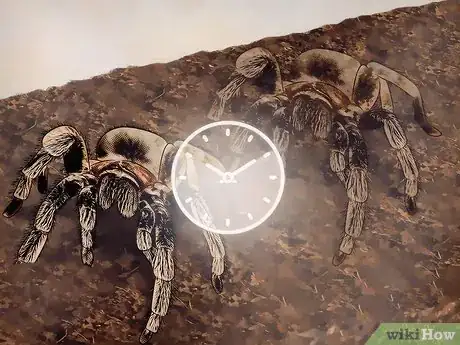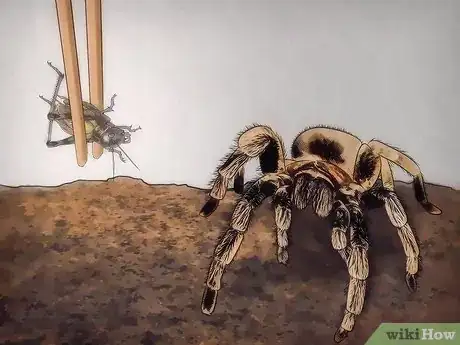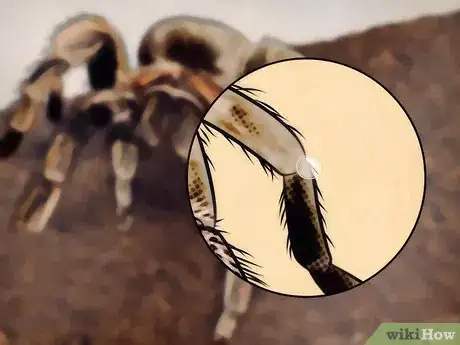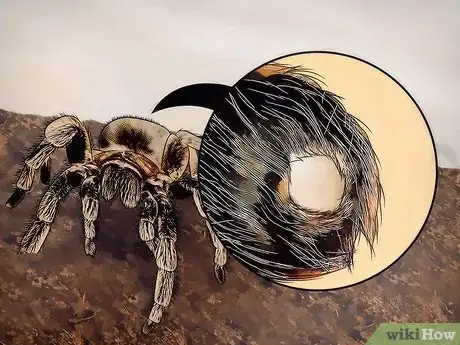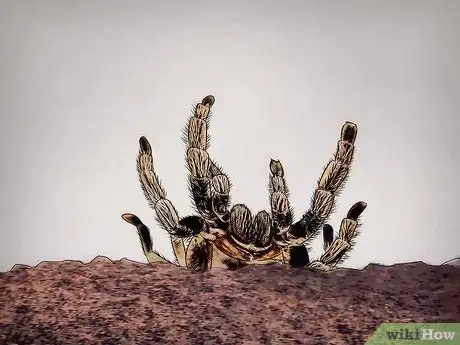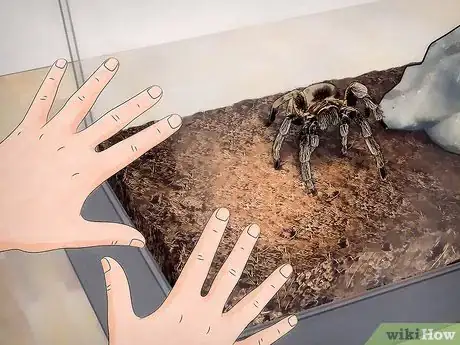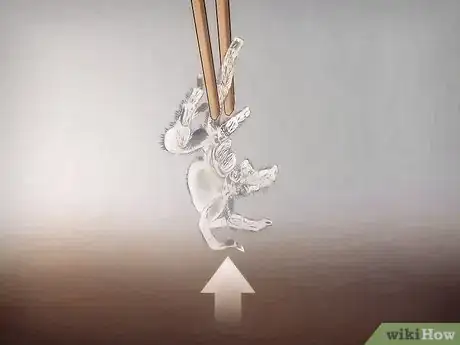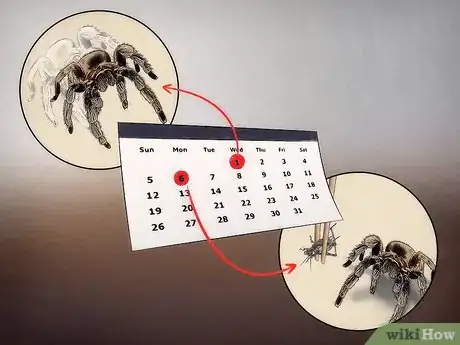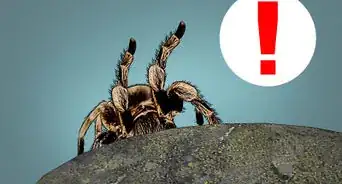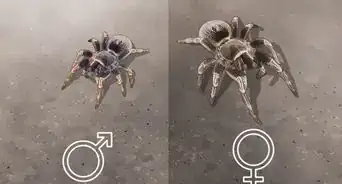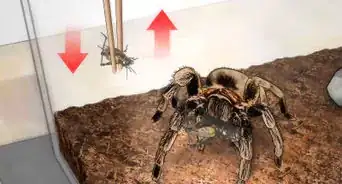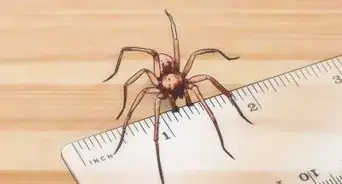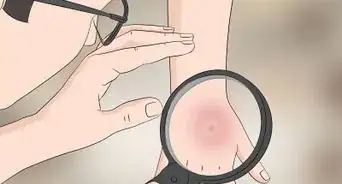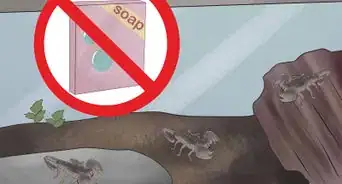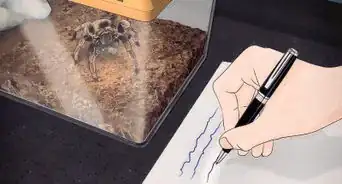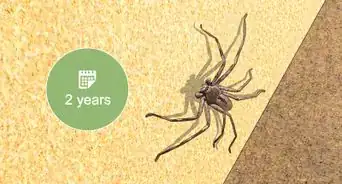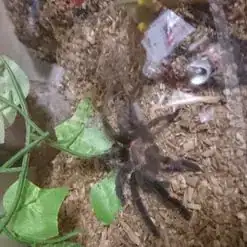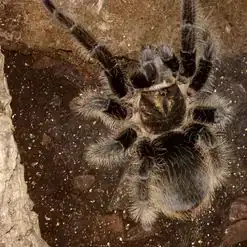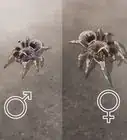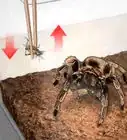This article was co-authored by Pippa Elliott, MRCVS. Dr. Elliott, BVMS, MRCVS is a veterinarian with over 30 years of experience in veterinary surgery and companion animal practice. She graduated from the University of Glasgow in 1987 with a degree in veterinary medicine and surgery. She has worked at the same animal clinic in her hometown for over 20 years.
wikiHow marks an article as reader-approved once it receives enough positive feedback. In this case, 93% of readers who voted found the article helpful, earning it our reader-approved status.
This article has been viewed 205,104 times.
Mature tarantulas will molt about once per year, while younger tarantulas may molt more often. Before your tarantula molts, you may notice some physical and behavioral changes. Since molting can be difficult for your tarantula, there are also some special care guidelines that you may want to keep in mind during and after the molting process.
Steps
Checking for Signs that Your Tarantula is Molting
-
1Watch for decreased movement. Is your spider moving around less than usual? Tarantulas often stop moving or don't move at all to conserve energy before a molt. If your tarantula has not been moving much lately, then this could be a sign that she is about to molt.[1]
-
2Note a refusal to eat.[2] Is your tarantula eating? Before a big molt, tarantulas will stop eating for extended periods of time, ranging from a few weeks to a couple of months. If you have noticed that your tarantula has not been eating or that she has been eating less than usual, then this could indicate that she is going to molt soon.Advertisement
-
3Check for clear fluid droplets. Some tarantulas secrete tiny drops of a clear fluid between the joints on their legs, and this can indicate that your tarantula is getting ready to molt. Check to see if you can see these droplets, but keep in mind that not all tarantulas do this before a molt.[3]
-
4Look for thinning hair or a bald spot. Some tarantulas will lose hair on their abdomens leading up to a molt. You might notice less hair on your tarantula’s abdomen or even a bald spot on your tarantula’s abdomen.[4] If you see this, then it is a good sign that your tarantula is getting ready to molt.
- Your tarantula’s abdomen may also appear darker and shinier than usual before she molts.[5]
-
5Check what position your tarantula is in. What position is the spider in? During a molt, a tarantula lays up-side down on her back or on her side to get out of the old skin easier.[6] This happens when a tarantula is actively molting and the whole process takes just a few hours. If your tarantula is on her back or side, then she might be trying to molt her skin.
- Spiders curl up their legs tightly underneath them when they die. If your tarantula is on her stomach and has curled her legs tightly inwards, then she may be dead or dying.[7]
Caring for Your Tarantula During and After Molting
-
1Leave your tarantula be. Tarantulas can sustain injuries or even die if they are disturbed while they are molting. Therefore, it is important to leave your tarantula alone while she molts.[8] Plan to leave your tarantula while she is showing signs of molting and for at least one week following a molt.
- Wait at least one week after a molt to pick up and/or hold your tarantula.[9]
-
2Remove the exoskeleton from the cage after your tarantula molts. After your tarantula has completely shed her exoskeleton, you can remove it from her cage. Try using a pair of tweezers to pick the exoskeleton up.
-
3Skip feedings for three to five days after your tarantula has molted. Your tarantula will be sensitive and prone to injury following a molt, which means that its normal prey might harm her. Therefore, do not feed your tarantula for at least a few days following a molt.[10]
- While your tarantula cannot hunt following a molt, she will still need to drink water. Make sure your tarantula has plenty of fresh water at all times.[11]
Warnings
- Do not try to pull off the exoskeleton while your tarantula is molting. You could accidentally harm her/him, such as by pulling off a limb.⧼thumbs_response⧽
References
- ↑ http://animals.mom.me/signs-tarantulas-molting-6424.html
- ↑ http://atshq.org/articles/found.html
- ↑ https://www.tarantulaguide.com/tarantula-molting/
- ↑ https://www.tarantulaguide.com/tarantula-molting/
- ↑ http://atshq.org/articles/found.html
- ↑ http://atshq.org/articles/found.html
- ↑ http://atshq.org/articles/found.html
- ↑ https://www.tarantulaguide.com/tarantula-molting/
- ↑ https://www.tarantulaguide.com/tarantula-molting/
About This Article
If you’re not sure how to tell if your tarantula is molting, pay attention to its behavior. If you notice that your tarantula hasn’t been moving as much as normal, or if it stops eating for a long period of time, it may be preparing to molt. Also, pay attention to whether your tarantula has thinning hair on its abdomen, or whether its abdomen seems darker and shinier than usual, as these can be signs of molting. When your tarantula is ready to molt, it will likely flip over onto its back or side. Do not disturb it during this time. For more tips from our veterinary co-author on how to care for your tarantula during and after molting, keep reading!
